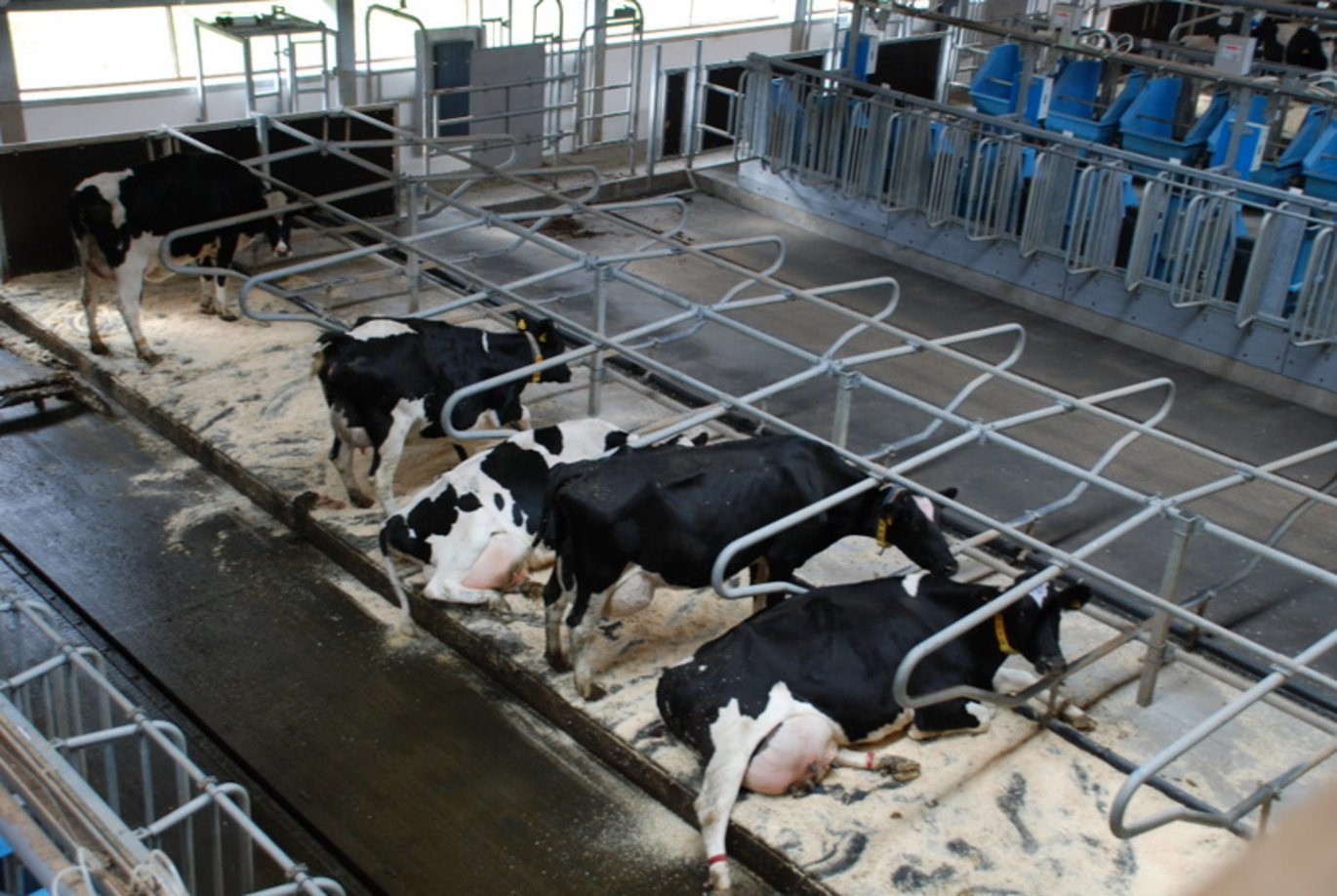Cattle prefer soft beds
Cattle rest for longer on a soft bed, they find it easier to lie down and get up without slipping, and they have fewer injuries on a well-bedded surface or deep bedding than on surfaces with none or minimal bedding.

Which surface is best for cattle in cubicles? What our intuition tells us is one thing, but what does research tell us? That was the question asked by the Ministry of Food, Agriculture and Fisheries to scientists at Aarhus University, and the scientists responded with a report of the knowledge available.
The specific questions from the Ministry were on the bedding quantities required for calves and young cattle. The aim is to establish the amount of bedding required for calves and young cattle housed in cubicles with different types of surfaces in relation to the organic regulations.
The scientific evidence regarding amounts of bedding required for young cattle in cubicles is very limited. Therefore, the recommendations in the report are based on the available knowledge, which primarily relates to dairy cows.
- In organic production it is given that cattle housed indoors must have access to a comfortable, clean and dry resting area, that the surface and bedding must prevent the animal from developing injuries and abrasions of the skin, and that the animals must generally appear clean, dry and without injuries, swellings, or abrasions, says senior scientist Margit Bak Jensen from Aarhus University.
A review of the literature shows that cattle rest for longer in cubicles with deep bedding of straw, sawdust or sand than in cubicles with mattresses with minimal bedding. In cows the lying time increased with increasing depth of bedding of straw or shavings. There are no studies on the effect of amount of bedding in cubicles on behaviour in young cattle. However, the lighter the animal, the less it compresses the bedding when lying down, and therefore less bedding may be required to achieve the same depth of compressed bedding material in young cattle as compared to cows.
- It is our estimate, based on the available knowledge in the area, that it would be unwarranted to recommend less bedding in cubicles for heifers and young bulls than what is currently recommended for cows, says Margit Bak Jensen.
The recommendations for organic dairy cows housed in cubicles are for concrete floor and mats a minimum of five cm of compressed bedding material, and for mattresses a minimum of five cm of compressed bedding including the mattress. This minimum is a low standard as it has been shown that increasing the amount of bedding over mattresses increases lying time and that mattresses with minimal bedding are associated with the development of hoof lesions.
This report was prepared as part of the contract between Aarhus University and the Ministry of Food, Agriculture and Fisheries for the provision of research-based advice.
Read the report (in Danish) Strøelsesmængder i sengebåse til ungkvæg, DCA Report No. 7, May 2012 here.
Additional information: Margit Bak Jensen, Department of Animal Science, e-mail: MargitBak.Jensen@agrsci.dk, telephone: +45 8715 7941
